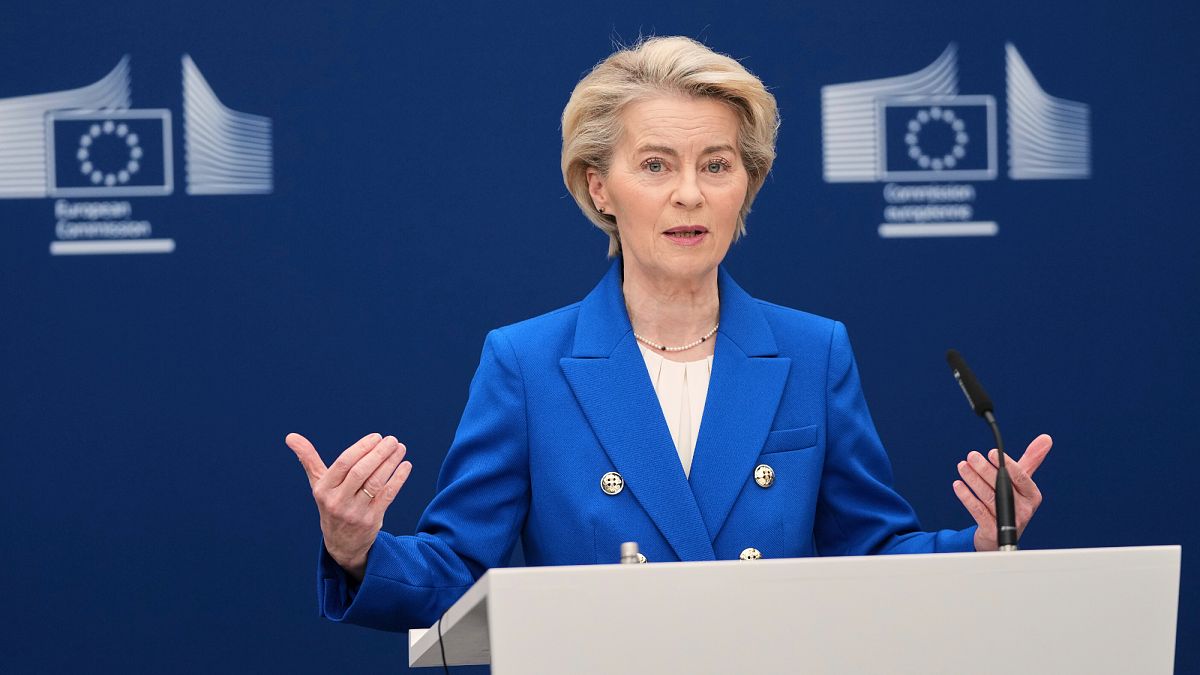The EU Commission has unveiled plans to borrow €150 billion to fund a major rearmament push. This joint borrowing proposal comes in the form of loans rather than grants—an idea largely rejected by so-called 'frugal' countries such as Germany and the Netherlands.
The EU has officially entered its "rearmament era" and is now ready to step up its efforts to support Ukraine in the short term and ensure its strategic autonomy to defend itself in the long term.
On Thursday, during a special meeting of EU leaders in Brussels, the 27 heads of state and government will discuss the five-point response plan, dubbed "REARM Europe", proposed by the EU Commission on Tuesday.
The plan aims to mobilise around €800 billion over the next four years, the bulk of which will come from member states increasing their national spending on defence and security.
“If member states would increase their defence spending by 1.5% of GDP on average (which is the cap established by the Commission in additional defence spending per year), this could create fiscal space of close to €650 billion over a period of four years,” von der Leyen told reporters on Tuesday.
The remaining €150 billion would come from a new defence instrument, allowing the Commission to borrow from capital markets to issue bonds and lend to member states.
This plan mirrors how the EU raised funds for the COVID-19 recovery with the European instrument for temporary Support to mitigate Unemployment Risks in an Emergency (SURE) , though this time, the funds would be distributed as loans rather than grants, based on national procurement plans for defence products throughout the decade.
“We're talking about [funding] pan-European capabilities domains like for example, air and missile defence, the artillery systems, missiles and ammunition, drones and anti-drone systems, but also to address other needs from cyber to military mobility," the Commission president said.
The new instrument will be an off-budget instrument, implying joint borrowing that would eventually have to be repaid.
“In the short term, I don't think we have an alternative to some debt funding. We will have to have the debt funding to ensure that there is tax smoothing, that there's spending smoothing and to actually get political majorities,” Guntram Wolff, senior fellow at the economic think-tank Bruegel, told Euronews.
“But it should be clear that it cannot be a permanent solution,” Wolff added.
A key pillar of von der Leyen's rearmament plan is giving member states more fiscal leeway to increase defence spending by activating the so-called national escape clause of the Stability and Growth Pact, as announced at the Munich Security Conference last month.
The pact, adopted last year, imposes strict fiscal rules requiring member states to keep debt below 60% of GDP and deficits under 3%.
Countries such as Poland and the Baltic states have long pushed for looser rules to allow higher defence spending without penalty. The escape clause can be triggered under exceptional circumstances that "lead to a major impact on public finances," though von der Leyen did not specify how ramping spending by highly indebted countries like France and Spain would be controlled.
Additional defence expenditure of up to 1.5% of GDP will be exempted from the EU’s spending limits for four years, but beyond that, increased defence spending must fit within national budgets.
“We need to see European efforts beyond the EU. If the EU takes this step alongside the UK and Norway, we will have greater leverage in defence procurement and support for Ukraine,” Maria Martisiute, policy analyst at the European Policy Centre, told Euronews.
Plan C, D, E: more private capital and a flexible EIB mandate and EU budget
The Commission has also proposed three additional measures: mobilising more private capital, adapting the European Investment Bank's (EIB) mandate, and incentivising defence-related investments in the EU budget.
In the short term, the EU is encouraging member states to redirect funds from cohesion policy programmes—which aim to bridge economic disparities between EU regions—to defence and security.
Unlocking the full potential of the Capital Markets Union will also be "indispensable" for von der Leyen's plan.
"We need to ensure that the billions of savings from Europeans are invested in markets inside the EU," she told member states in a letter sent on Tuesday morning.
The bloc is not short of capital: European households save €1.4 trillion a year, compared with €800 billion in the US - but €300 billion of Europeans' savings flow into markets outside the EU every year.
To address this, the Commission will present by 19 March a communication on a European Savings and Investment Union to incentivise risk capital and promote seamless capital flows across the EU.
The final pillar of the plan is to broaden the mandate of the European Investment Bank (EIB).
The EIB has already changed its policy on financing dual-use companies - i.e. those with less than 50% of their revenues coming from defence-related activities - and is currently examining how to extend its scope of financing while safeguarding its lending capacity.
“In a time of rising defence expenditures, that's quite a constraint because many dual use companies cannot be funded by the EIB (...), so I think that there is scope to change the mandate of the EIB and use the EIB as a vehicle to fund companies that have a severe gap in their funding from private banks and from capital markets,” Wolff said.
Are there other proposals to improve Europe’s defence capabilities?
The Commission's proposals respond to a Europe facing "a clear and present danger on a scale that none of us have seen in our adult lifetime." However, additional long-term options could include boosting defence spending in the next EU budget or creating a "rearmament bank."
The current Multiannual Financial Framework (2021-2027) allocated only €15 billion (1.2% of the MFF) to security and defence.
EU-funded initiatives include the Act in Support of Ammunition Production (ASAP), the European Defence Fund (EDF), and EDIRPA. The Commission has also proposed the European Defence Industry Programme (EDIP) for post-2025 to enhance capabilities.
Yet the EU’s financial watchdog has warned that EDIP lacks the budget to meet its objectives. At least €500 billion will be needed over the next decade to close key capability gaps.
Commissioner Andrius Kubilius has suggested allocating nearly €100 billion for defence investment in the next Multiannual Financial Framework (2028-2034).
Negotiations on the next MFF will begin this summer, but those funds will not be available in the short term.
Meanwhile, the EU is in discussions with non-EU countries such as the US and UK to establish a "rearmament bank" to significantly boost defence spending.
This new bank would not impact national borrowing capacity, as it would issue triple-A bonds backed by shareholder nations. This would enable rapid investment in defence procurement and technology without adding to public debt.













